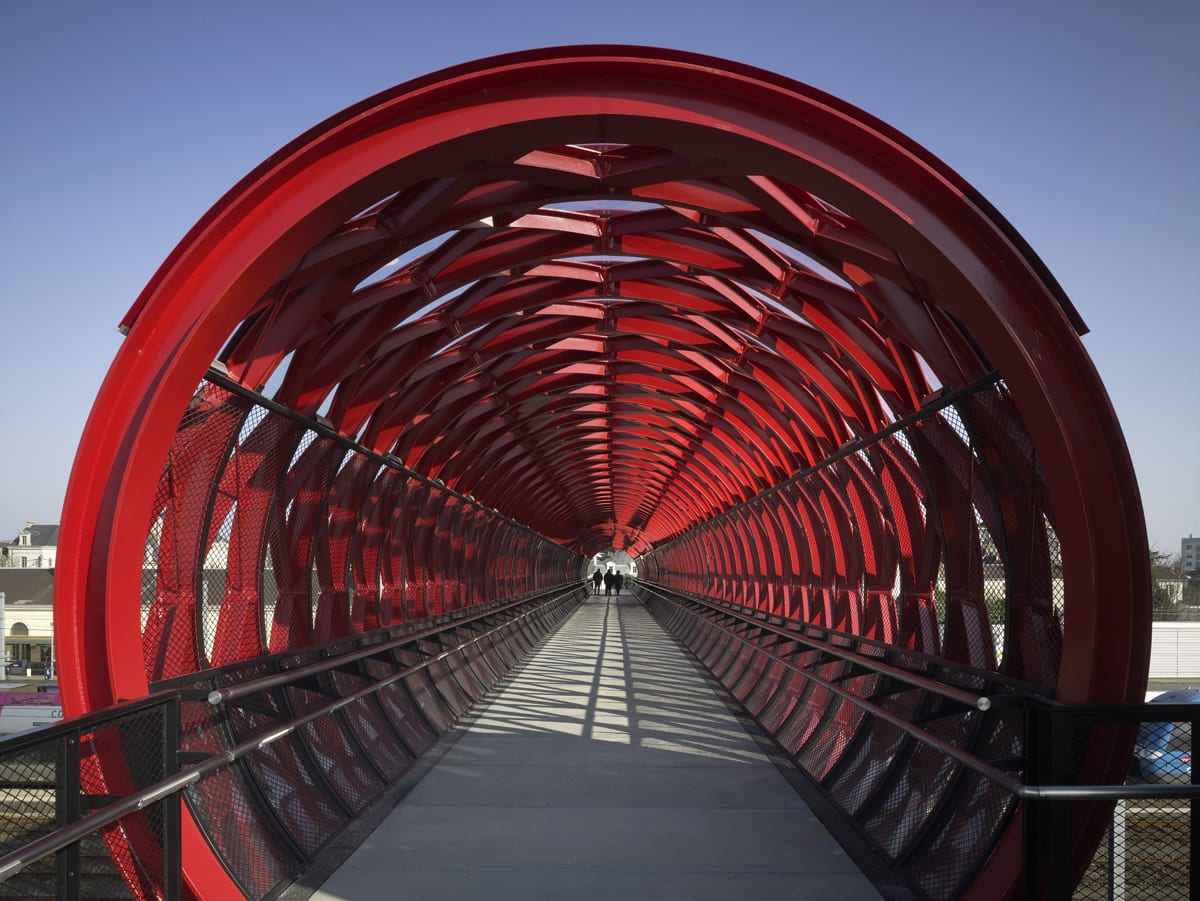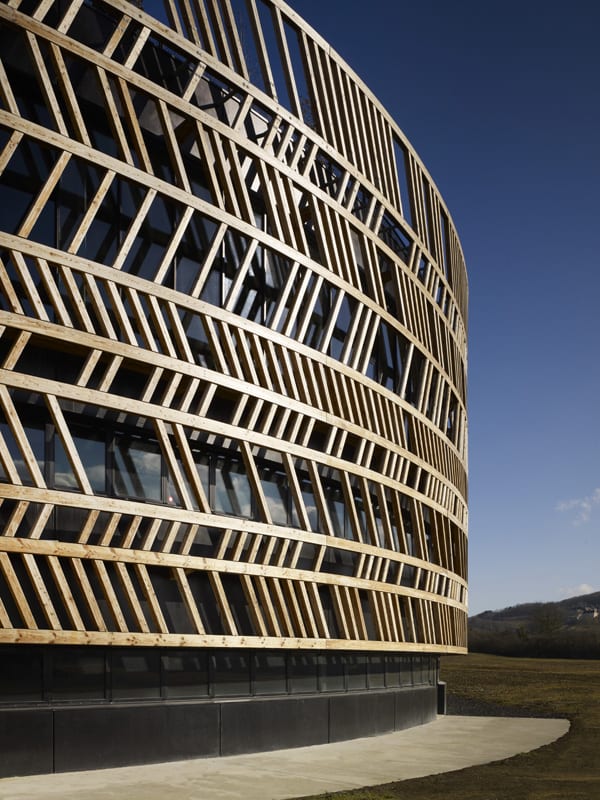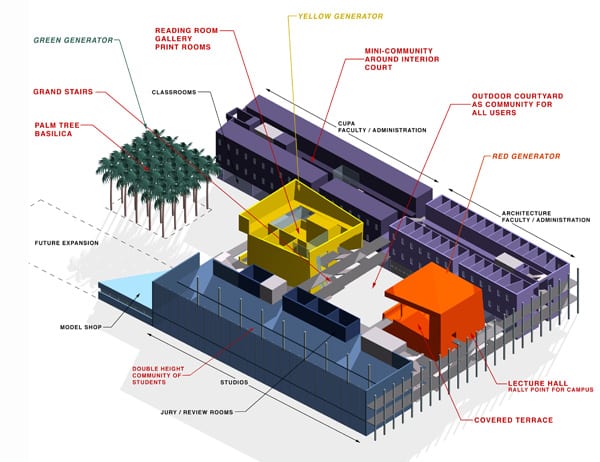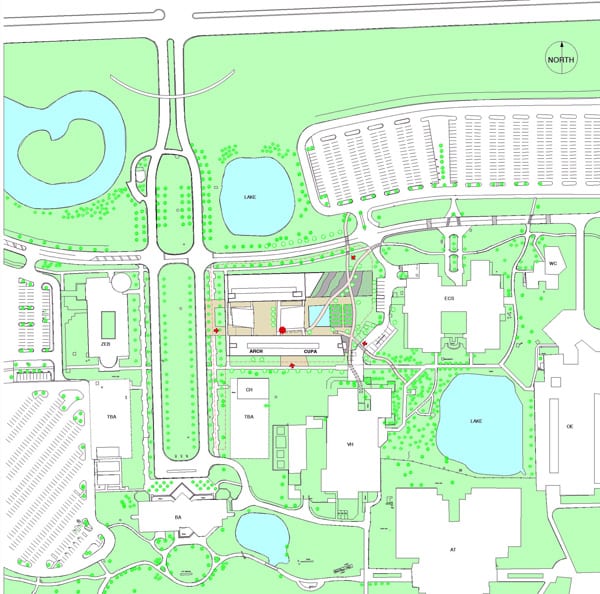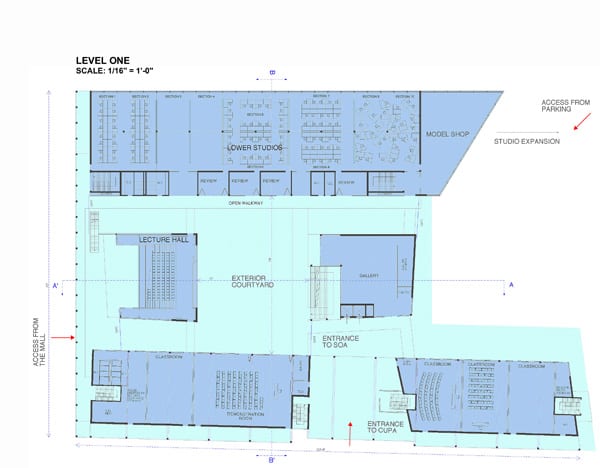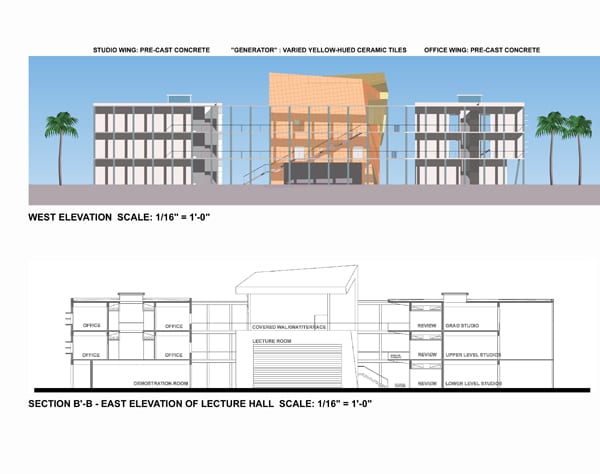Interview with Stanley Collyer
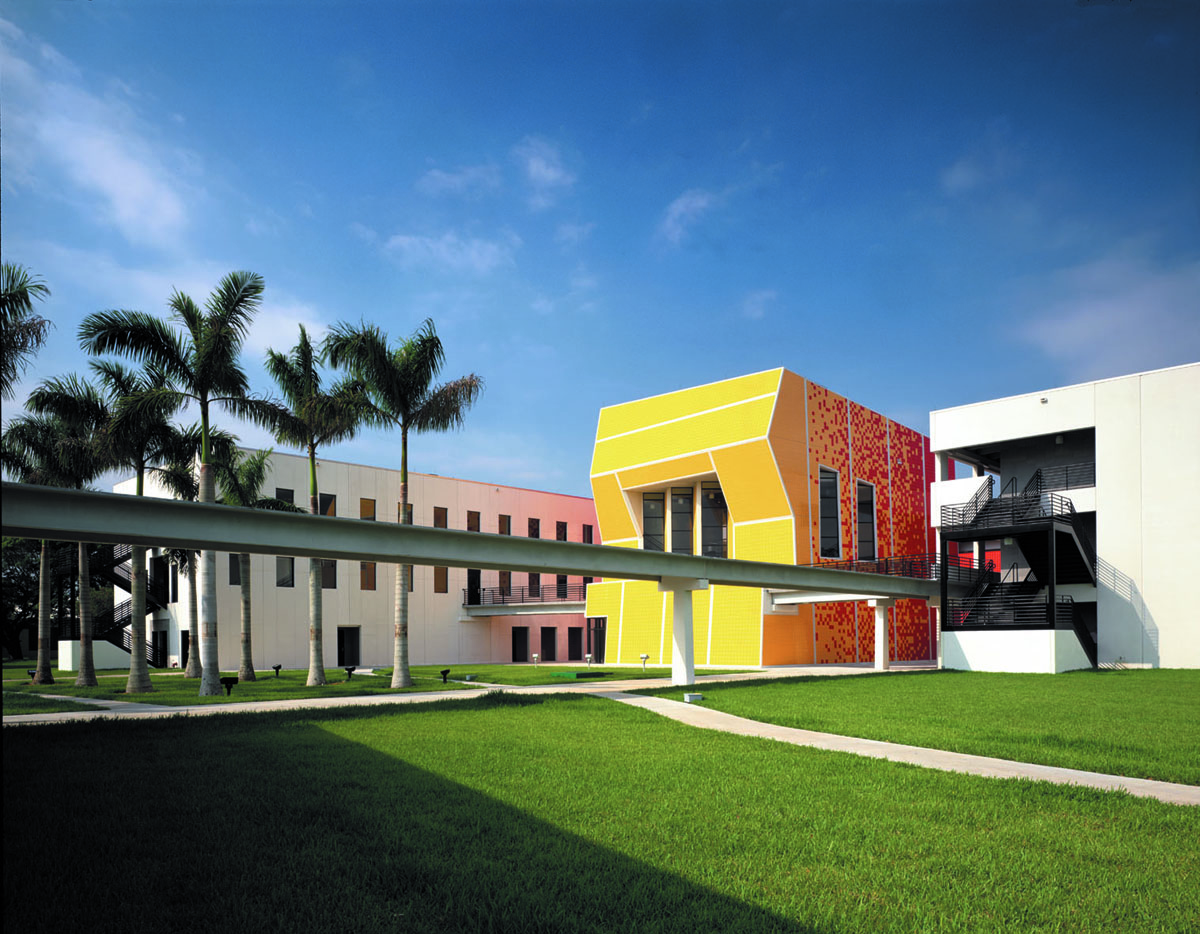
Tschumi Interivew (audio – mp3)
Tschumi Interivew (audio – wma)
COMPETITIONS: You grew up in an architectural environment; so was this always going to be your future, or did you speculate about doing anything else?
BERNARD TSCHUMI: My father was an architect, and I believe a very good one. But at first my inclination was more in the literary and philosophical realms. But then, living in cities, experiencing cities had a great fascination for me. And that’s how I became an architect.
COMPETITIONS: I was in Parc de la Villette in Paris shortly after it was completed. Winning that competition must have been a game changer for you.
BT: It was a real game changer, because, until then, I had never entered a real competition. I had pursued rather theoretical research for almost ten years, and I decided it was time to test some of the conceptual ideas in a real project. Clients don’t just appear out of the blue; so like many young architects I entered an anonymous competition with a lot of entries. By an incredible set of circumstances, out of 476 entries, I won it. In a way, it was really an attempt to translate and transpose certain ideas and concepts that had been explored prior to the competition and through the competition.

COMPETITIONS: When I saw the site, one of the things, which came to mind were follies. This may not have been the exact idea you were pursuing; so what was the strategy?
BT: The early, theoretical work that preceded the competition was dealing very much with the idea of movement, the idea I would describe as points, lines and surfaces. In other words, the points were the points of actions or events; the movements were translated into the lines of the project; and the surfaces into spaces that the visitors could appropriate. The word, “follies,” also came out in prior works in New York City, where I was exhibiting in art galleries. Occasionally I was invited to do what used to be called site-specific installations. You were given a site, a ridiculously low sum of money, and you could do any type of three-dimensional construction for a short period—usually three months. I always wanted to make it clear that I was not a sculptor, but an architect. And I called them “follies.” When I entered the le Villette competition, I thought, I’m going to keep using the concept of follies. In reality, it was places of activity. But I sort of used them as “folie (in French).” We were in France, and that spelling was the French spelling. There is an interesting thing about the word in the French language: it means something like “madness” as well as the meaning, a little house in the park. I played on that ambiguity. I was interested in literature and books by Foucault, who had just written that important historical study, Madness in the Age of Reason. That’s how the word “folie” came about.
COMPETITIONS: Coming back to your Florida International School of Architecture competition, you mentioned that it was a very low budget $135 per square foot.*
BT: We knew that it was a very tight budget. I was interested in that, because I said, it is a school of architecture, and let’s try to do that in a very raw manner: not that hung ceiling, but show where the ducts are, show where the conduits are, but do it in a very coherent and consistent manner, so that the building itself is a learning or teaching tool. Because of the cost constraints, we used a fabricator who normally makes prefabricated car parks (garages). So they played the game, and everything is literally made as a house of cards. They were 20 miles away and drive their trucks to the point of assembly. It was quite fascinating.
COMPETITIONS: Using color can sometimes be controversial. It would seem to me that you used color quite effectively in that building. And the site of the building is very high profile, near the entrance to the FIU campus.
BT: I play with concepts and ideas, and therefore architecture has to express such concepts. The use of color was exactly a way to put the emphasis on the concept, to help the articulation between the different parts. That is the case with La Villette, where the follies play in contrast with the surroundings. At FIU I used as activators space the auditorium on one hand and library and art gallery on the other hand—as opposed to the two slabs, the slabs with the studios/design spaces on one hand and the classrooms and offices on the other. The use of color was absolutely strategic. At the same time it was also related to the climate and to the culture. I had done a school of architecture in France, and I would never have used that orange and red in that climate in that region. So it is also simultaneously conceptual and contextual.

COMPETITIONS: Much of what one sees in competitions is about architectural expression. Some complain that competitions have become simply beauty contests, and the way that a building really works is in the background and my not be investigated that closely. How do you weigh both issues?
BT: I participate in a lot of competitions, and I get incredibly irritated by with those competitions, which you call beauty contests. It’s really problematic, and it’s bad both for architecture and the users afterwards. It creates also a misunderstanding of expectations on both sides. Any architecture should start with what it does, and not what it looks like. It’s important that people who judge competitions make the effort of trying to understand how the project works. It’s also important that the architects, who are competing, are given a little room to explain how it works and what the intentions of the project are. There are too many competitions where people are just asked to show renderings. And that is really a problem, for that has little to do with the reality of the architecture itself. The way the competition is stated should be directed toward people with a certain level of experience. There should also be architects on the jury, and, if possible, people who are knowledgeable about what architecture is about and know how to read a plan or sections. But there are too many competitions, which are just about producing pretty images. And that’s not good for anybody.
COMPETITIONS: Does it ever give you pause when there are many laypersons on the jury?
BT: I should be more careful. Generally, I’m wise; but sometimes I get caught.

COMPETITIONS: You touched on how the climate influences how one presents a building. For instance, if we juxtapose the FIU Architecture Building to the Acropolis Museum, there is a definite contrast. Some might look at a building and say, that’s a Frank Lloyd Wright or Frank Gehry building. You are obviously not too interested in that.
BT: No. If I was to separate architects into two families, there are those who try early on to develop a vocabulary, even a style of their own, to become instantly recognizable. You see this from day one, and from one generation to the next: Wright, Frank Gehry, Zaha Hadid, Richard Meier before that—without making a value judgment. There are people closer to Jean Nouvel, Rem Koolhaas and myself, who, for every project tend to develop a set of ideas or a concept, which will then relate very strongly to the conditions of the site, or culture, and will look quite different from one another. In the case of the Acropolis Museum, my concern had to do with the Parthenon, not trying to compete with it, but to taking a totally different slant. So the strategy is very different.

COMPETITIONS: You can almost talk about a foreground and background building.
BT: You can talk about foreground and background buildings; but you have to be careful using something, which will be understood by academics. Also clients sometime want you to do a foreground building. So you may have nothing but foreground buildings.
COMPETITIONS: How do you organize the office when you are doing a competition? Do you put a certain team in the office on it?
BT: We are doing two competitions at the moment, which is a pretty regular situation for us. At the beginning I will only put two people on it, who are going to unravel the program, see the constraints, make it work. It’s not at all about what it looks like; it’s only about what it does. Some programs are very complex, and I have that strong believe that before you do any form, you have to understand how it works. Then they will also start to understand how to solve the problem and also begin to see alternatives. I am in constant dialogue with them, and we start to establish a sort of catalogue of possibilities—a matrix of possibilities. We analyze the advantages and disadvantages of those, and we might then keep sometimes two, maybe three, four, or even five. At that stage, we get more people working on it, possibly four or five, depending on the number of possibilities. Then, out of the possibilities we are interested in, new possibilities will occur. So the team gets bigger, and we start to understand what the whole thing is about. Then we reduce the numbers—we go to only two or three—and then we explore it further. So it’s a fairly long process until the moment when we are satisfied that one of the alternatives is better than the other. Until then, there is not yet that much image or design. We are aware of it; but it’s only when we know we have the concept that is going to be able to carry us up to the final image that we start on that. For example, for a radio and television and digital studies center that we are doing at the moment, the whole process will last four months: two months doing what I just described, two months working on the solution, and, out of that, probably no more than two to three weeks on the image-making on the rendering.


COMPETITIONS: From my conversations with other offices, I would assume that doing competitions is a morale raiser in the office.
BT: I agree entirely. Years ago, I was competing against a number of important architects—one of them was James Stirling—for a building in Kyoto. And Jim said exactly that. He was sort of unsure about doing the Kyoto competition, but he said, “It’s good for the morale in the office.”
COMPETITIONS: Years ago, your father won the competition for the original WHO building in Geneva. I notice that you are on the jury for the competition to add an addition. Is he going to be looking over your shoulder.
BT: I knew that they had needs to expand it and was even worried that they might be thinking of taking it down. I was happy to hear that they were thinking of keeping it and then having a competition. When I got a phone call, I was first asked whether I wanted to be a competitor or a jury member. Of course I was tempted to be a competitor; but then I felt it was much better to keep a distance and be a jury member. It’s a very large anonymous competition, which makes it a little more difficult. Since they have advertised world-wide, we may have architects from every type of experience. I had nothing to do with establishing the rules and what is to be submitted; so it might not be so easy. I am very hopeful that we can find a good project.

COMPETITIONS: What about the changing rules in the EU on competitions that occurred in the early 1990s?
BT: Before those changes, whether or not the competitions were anonymous or not, and if you were one of the finalists, you could present your project to the jury. It’s incredibly important that the authors of the work present his or her project, and that it is not anonymous. Then you see what the intentions are; otherwise you are just seeing images. Images enhance the quality of the scheme, but also the skill of the renderers. But to have a totally anonymous competition is hardly a good idea. You can have a two-stage competition, whereby you may have hundreds of entries in the first stage, but then have possibly six finalists present in person to the jury. At least there is then a dialogue between the finalists and the jury.
• Number as quoted from Architectural Record
